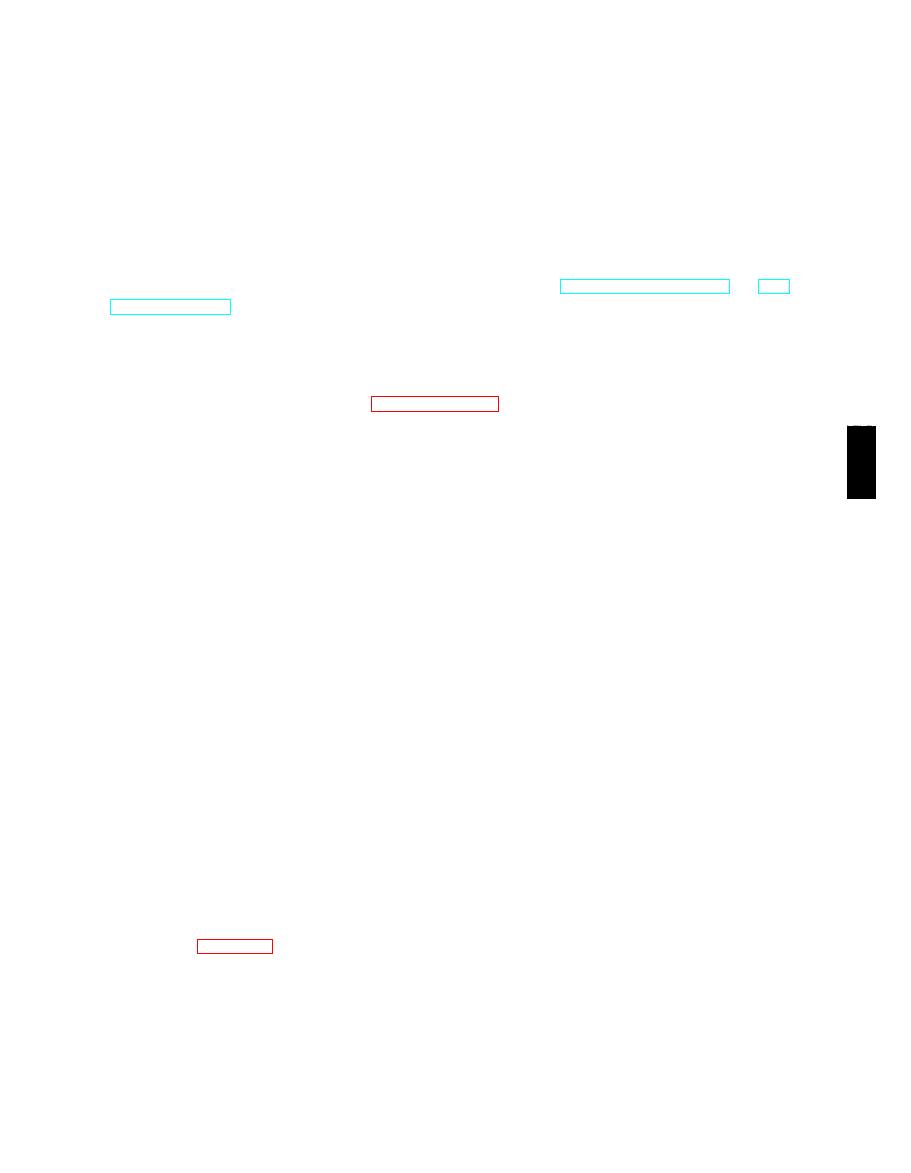 |
|||
|
|
|||
|
|
|||
| ||||||||||
|
|
 TM 11-6665-209-40
TROUBLESHOOTING
2-1. GENERAL INSTRUCTIONS
a. Troubleshooting at the general support maintenance category includes all the
techniques outlined for organizational maintenance and any special or additional techni-
ques required to isolate a defective part. The maintenance procedures are not complete
in themselves, but supplement the procedures outlined in TM 11-6665-209-10 and TM
11-6665-209-20.
b. Troubleshooting may be performed while the radiac set is operating or if
necessary, after the equipment (or parts of it) has been removed from service. When
trouble occurs, certain observations and measurements can be made that will help to
determine the source of trouble. Paragraph 2-2 describes the systematic procedure to be
followed which will enable the maintenance personnel to isolate the cause of the trouble
and correct the fault.
a. General. Three steps are used in troubleshooting equipment: Sectionalization,
localization, and isolation. Sectionalization means tracing the fault to the major unit.
Localization means tracing the fault to the defective section or stage within an assembly
or subassembly. Isolation means tracing the fault to the defective part. Some faults can
often be isolated by sight, touch, or hearing. The majority of faults, however, must be
isolated by detailed electrical, mechanical, or electronic checks.
b. Sectionalization Checks. After the trouble has been sectionalized, perform an
operational check of the radiac set. The operational check serves as a check of the
localization technique. In addition, assemblies or subassemblies, in some cases, parts
can be localized by the methods listed below.
(1) V i s u a l Inspection. The purpose of visual inspection is to locate faults without
testing or measuring circuits or components. All visual signs should be analyz-
ed to help locate the fault to a particular subchassis, stage, or part.
Mechanical faults are most often localized through visual inspection.
(2) Pluck-Out Parts. Defective pluck-out parts will be the cause of many troubles.
Remove and test all pluck-out parts suspected of being faulty. Replace each
defective part with an identical part known to be good.
(3) Troubleshooting Table. The malfunctions listed in the troubleshooting table
assembly.
|
|
Privacy Statement - Press Release - Copyright Information. - Contact Us |